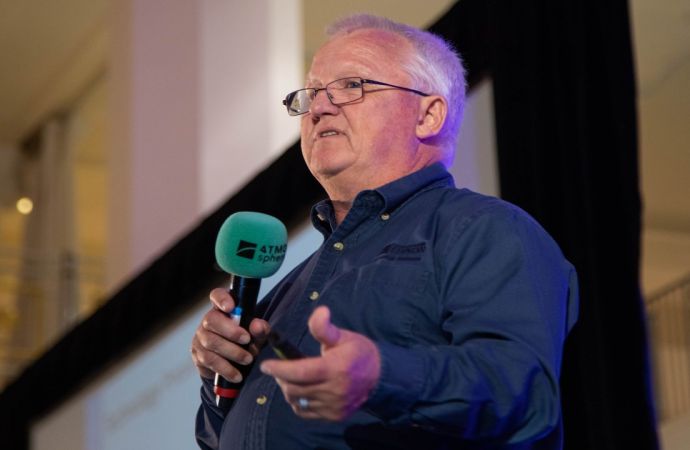Keeping global 21st century temperature rise under 2 degrees Celsius compared to pre-industrial levels is still technically and economically within reach, according to a new report published during last week’s Bangkok climate talks: “The evidence from robust scientific analysis clearly shows that it is a question of political will”. A phase-out of HFCs could avoid up to 0.5°C increase in temperature, yet the 2 degrees Celsius warming limit cannot be achieved with

According to the latest Climate Action Tracker (CAT) publication, a science-based assessment by Ecofys, Climate Analytics and the Potsdam Institute for Climate Impact Research (PIK) that takes a look at the global picture and the United Nations Framework Convention on Climate Change (UNFCCC) negotiations, the planet is likely heading for a 3°C rise in global mean temperature by 2100, unless further action beyond current pledges within the context of the UNFCCC negotiations is taken.
2°C climate warming limit still possible
The Climate Action Tracker provides an analysis on national greenhouse gas emission reduction proposals for 2020 under the international climate negotiations and finds that governments are taking action to implement their reduction proposals, though many are set to fail in reaching those proposals.
“Current global greenhouse gas emissions in aggregate are likely to produce a warming above 3°C… [However,] the evidence from robust scientific analysis clearly shows that it is a question of political will - not technological feasibility – as to whether 2°C – or 1.5°C is still achievable.
A comprehensive mitigation strategy requires action on both CO2 and non-CO2 emissions
Besides addressing the question whether it is still realistic to limit warming to 2°C, the Climate Action Tracker has also looked at the role of curbing non-CO2 gases such as methane or HFCs.
“A comprehensive climate change mitigation strategy requires measures to reduce both CO2 and non-CO2 emissions. Crucially, CO2 reduction measures alone could reduce global warming by 2100 by at least 1°C. Deep methane reductions (consistent with the reductions assumed in 2°C and 1.5°C scenarios) could reduce the total temperature increase by 0.3°C. A phase-out of HFCs could avoid a 0.05°C increase in temperature, up to 0.5°C for the highest estimate of future business-as-usual growth of these gases found in the scientific literature”.
Evidently mitigation efforts on non-CO2 gases such as HFCs are an essential part of a comprehensive climate change mitigation strategy, and UNEP estimates that without action the increasing use of HFCs could add annual greenhouse gas emissions of between 3.5 and 8.8 Gt CO2 eq by 2050 - comparable to total current annual emissions from transport. Yet action on non-CO2 gases is complementary and would not serve as justification for delaying action on CO2.
Parties in latest climate talks discuss closing the ambition gap through action on HFCs
Action on HFCs was explicitly discussed by parties at the latest informal round of negotiations under the UNFCCC that ended last week in Thailand, Bangkok, and more specifically within the Ad Hoc Working Group on the Durban Platform for Enhanced Action (ADP), where governments outlined their respective visions for what legal form a new post-2020 international climate agreement should take and for a means to close the ambition gap.
One of the proposals discussed for raising the climate ambition was that the Montreal Protocol could be expanded to phase out the production and use of potent climate warming HFCs. Micronesia, supported by the US, highlighted the value of initiatives outside the UNFCCC, such as those focused on HFCs, but also black carbon, methane and ground-level ozone, but highlighted that outside actions must be additional to current pledges. The EU also supported focusing work on issues such as HFCs given that parties are not likely to step up existing targets and pledges this year.
Latest climate talks provide positive impetus in the run-up to Doha
Parties at the latest informal round of the UNFCCC negotiations (30 August - 5 September 2012, Bangkok, Thailand) in the run up to the United Nations climate conference in Doha this November, made some progress with key issues such as the second commitment period of the Kyoto Protocol, which is to commence in January 2013, and a new global climate agreement that Parties have agreed to adopt by 2015 for entry into force in 2020.
Progress with regards to the two issues is closely interlinked, as ensuring the continuation of the Kyoto Protocol, which currently binds industrialised economies to targeted emissions curbs, is seen by developing countries as a precondition to agreeing to a new post 2020 treaty. In turn, industrialised countries are reluctant to up their pledges before developing countries also commit to legally binding targets.
The importance given by developing countries to the second commitment period of Kyoto is reflected in a joint statement issued by the Alliance of Small Island States (AOSIS), the Least Developed Countries (LDCs) and the Africa Group representing over a billion people: “We are concerned that the environmental integrity of the Kyoto Protocol, which is the only international treaty that binds developed nations to lower (greenhouse gas) emissions, and thus our lone assurance that action will be taken, is eroding before our eyes”.
Regarding the post-2020 climate treaty, the Bangkok talks produced a multitude of ideas, yet did not come up with a work programme between now and 2015, by when the treaty needs to be agreed upon. Therefore the negotiation sessions have been characterised as resembling a group-brainstorming session.
Nonetheless, Christiana Figueres, executive secretary of the UNFCCC, remained optimistic by noting that “the investment in Bangkok produced results” and has enabled Kyoto Protocol member states to achieve real progress on key questions. Figueres also acknowledged that there are still tough questions ahead but that “there is now positive impetus and a greater sense of convergence that will stimulate political discussions at the highest level in the run-up to Doha”.
2°C climate warming limit still possible
The Climate Action Tracker provides an analysis on national greenhouse gas emission reduction proposals for 2020 under the international climate negotiations and finds that governments are taking action to implement their reduction proposals, though many are set to fail in reaching those proposals.
“Current global greenhouse gas emissions in aggregate are likely to produce a warming above 3°C… [However,] the evidence from robust scientific analysis clearly shows that it is a question of political will - not technological feasibility – as to whether 2°C – or 1.5°C is still achievable.
A comprehensive mitigation strategy requires action on both CO2 and non-CO2 emissions
Besides addressing the question whether it is still realistic to limit warming to 2°C, the Climate Action Tracker has also looked at the role of curbing non-CO2 gases such as methane or HFCs.
“A comprehensive climate change mitigation strategy requires measures to reduce both CO2 and non-CO2 emissions. Crucially, CO2 reduction measures alone could reduce global warming by 2100 by at least 1°C. Deep methane reductions (consistent with the reductions assumed in 2°C and 1.5°C scenarios) could reduce the total temperature increase by 0.3°C. A phase-out of HFCs could avoid a 0.05°C increase in temperature, up to 0.5°C for the highest estimate of future business-as-usual growth of these gases found in the scientific literature”.
Evidently mitigation efforts on non-CO2 gases such as HFCs are an essential part of a comprehensive climate change mitigation strategy, and UNEP estimates that without action the increasing use of HFCs could add annual greenhouse gas emissions of between 3.5 and 8.8 Gt CO2 eq by 2050 - comparable to total current annual emissions from transport. Yet action on non-CO2 gases is complementary and would not serve as justification for delaying action on CO2.
Parties in latest climate talks discuss closing the ambition gap through action on HFCs
Action on HFCs was explicitly discussed by parties at the latest informal round of negotiations under the UNFCCC that ended last week in Thailand, Bangkok, and more specifically within the Ad Hoc Working Group on the Durban Platform for Enhanced Action (ADP), where governments outlined their respective visions for what legal form a new post-2020 international climate agreement should take and for a means to close the ambition gap.
One of the proposals discussed for raising the climate ambition was that the Montreal Protocol could be expanded to phase out the production and use of potent climate warming HFCs. Micronesia, supported by the US, highlighted the value of initiatives outside the UNFCCC, such as those focused on HFCs, but also black carbon, methane and ground-level ozone, but highlighted that outside actions must be additional to current pledges. The EU also supported focusing work on issues such as HFCs given that parties are not likely to step up existing targets and pledges this year.
Latest climate talks provide positive impetus in the run-up to Doha
Parties at the latest informal round of the UNFCCC negotiations (30 August - 5 September 2012, Bangkok, Thailand) in the run up to the United Nations climate conference in Doha this November, made some progress with key issues such as the second commitment period of the Kyoto Protocol, which is to commence in January 2013, and a new global climate agreement that Parties have agreed to adopt by 2015 for entry into force in 2020.
Progress with regards to the two issues is closely interlinked, as ensuring the continuation of the Kyoto Protocol, which currently binds industrialised economies to targeted emissions curbs, is seen by developing countries as a precondition to agreeing to a new post 2020 treaty. In turn, industrialised countries are reluctant to up their pledges before developing countries also commit to legally binding targets.
The importance given by developing countries to the second commitment period of Kyoto is reflected in a joint statement issued by the Alliance of Small Island States (AOSIS), the Least Developed Countries (LDCs) and the Africa Group representing over a billion people: “We are concerned that the environmental integrity of the Kyoto Protocol, which is the only international treaty that binds developed nations to lower (greenhouse gas) emissions, and thus our lone assurance that action will be taken, is eroding before our eyes”.
Regarding the post-2020 climate treaty, the Bangkok talks produced a multitude of ideas, yet did not come up with a work programme between now and 2015, by when the treaty needs to be agreed upon. Therefore the negotiation sessions have been characterised as resembling a group-brainstorming session.
Nonetheless, Christiana Figueres, executive secretary of the UNFCCC, remained optimistic by noting that “the investment in Bangkok produced results” and has enabled Kyoto Protocol member states to achieve real progress on key questions. Figueres also acknowledged that there are still tough questions ahead but that “there is now positive impetus and a greater sense of convergence that will stimulate political discussions at the highest level in the run-up to Doha”.
MORE INFORMATION
Related stories









